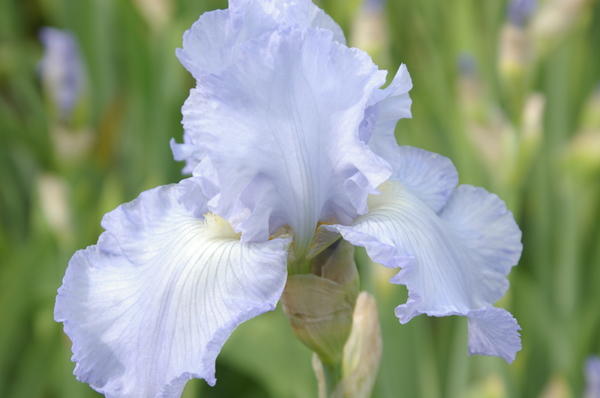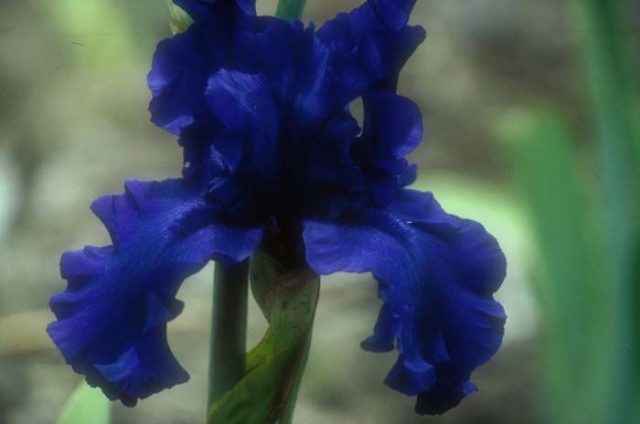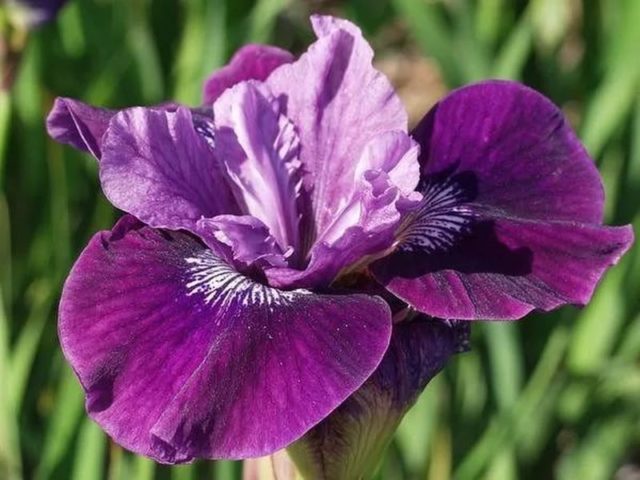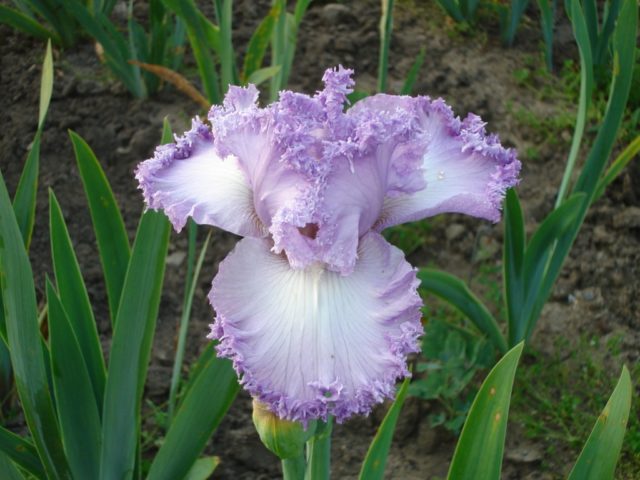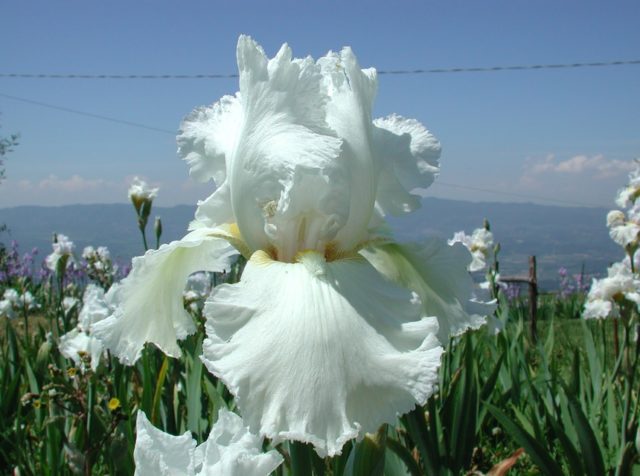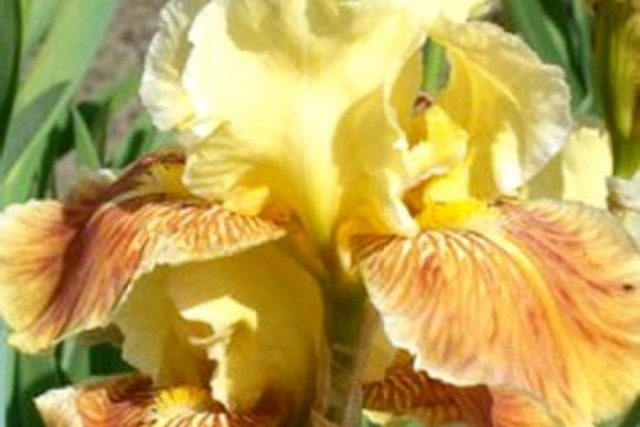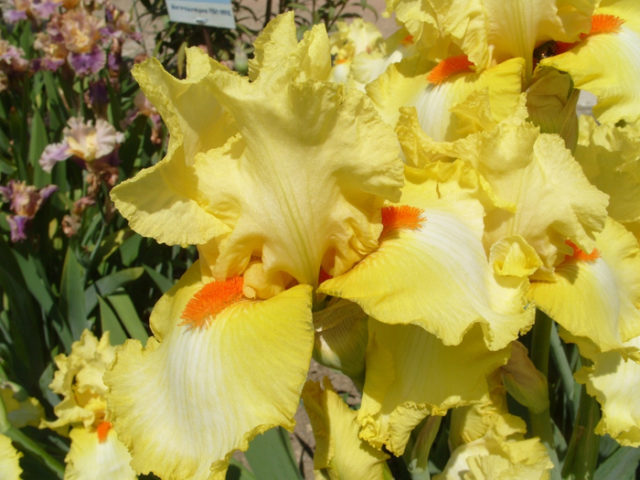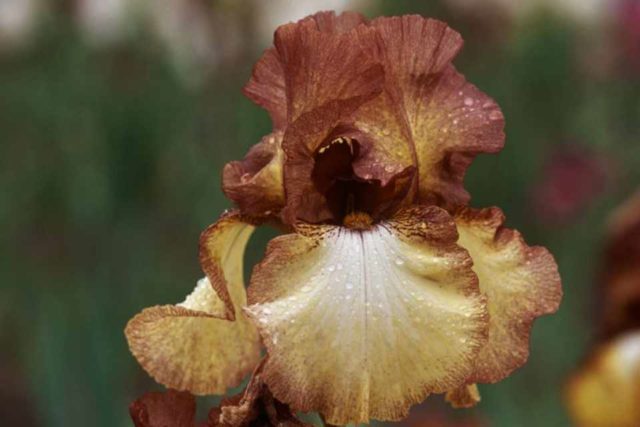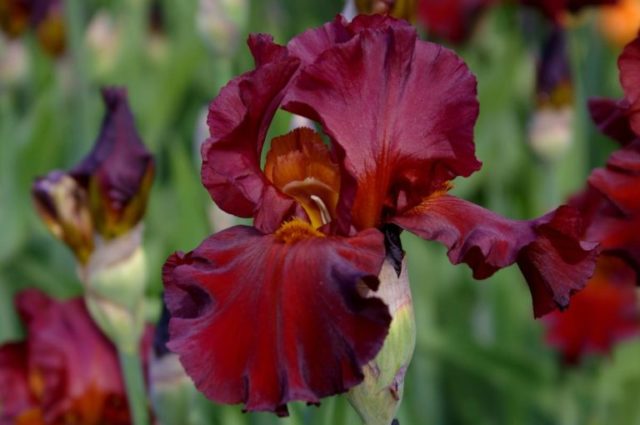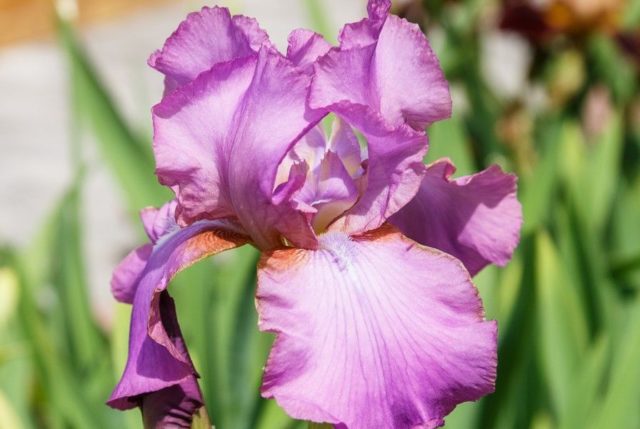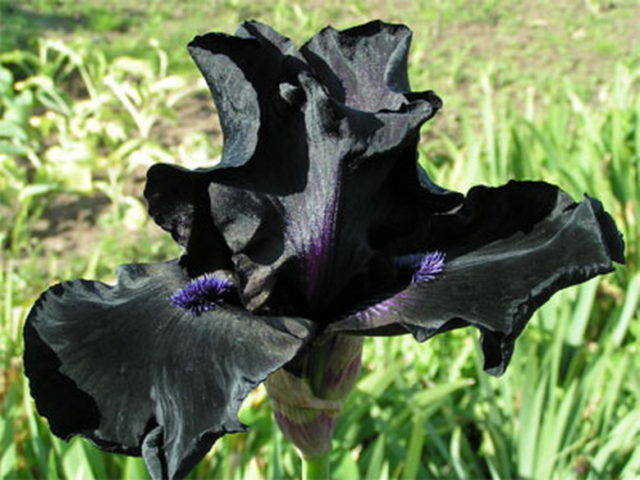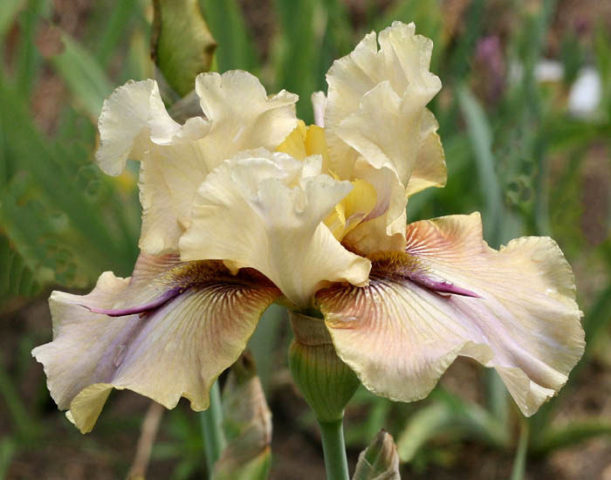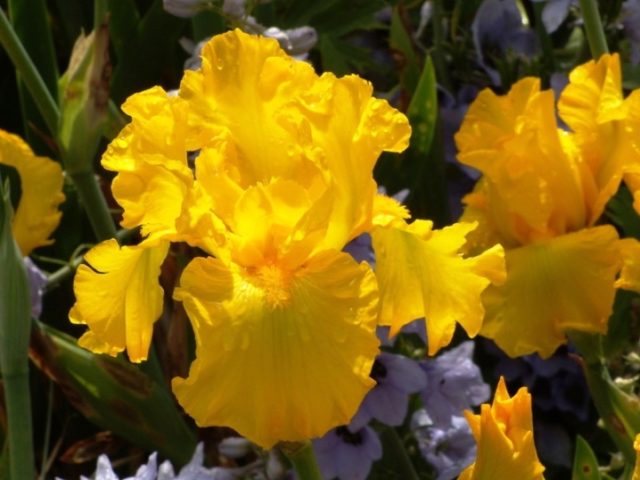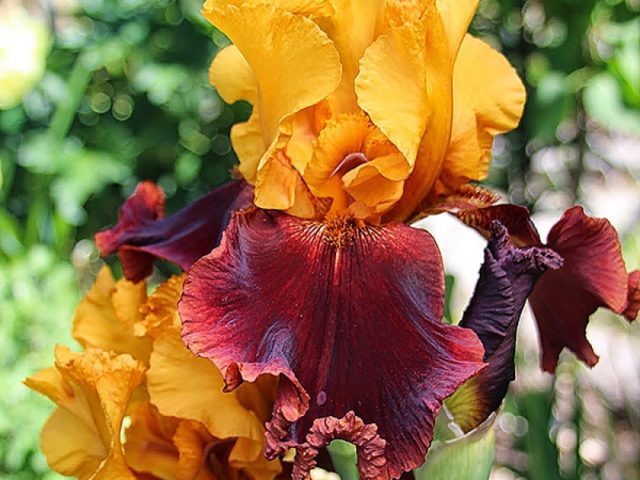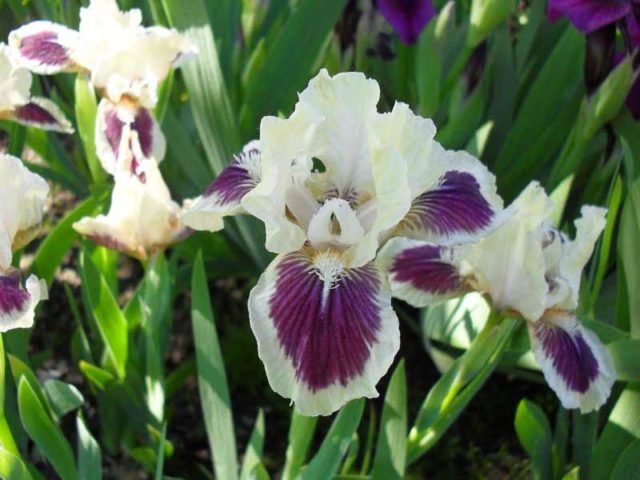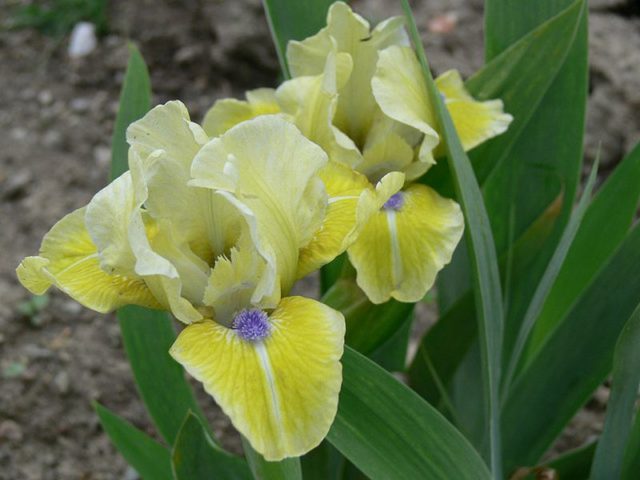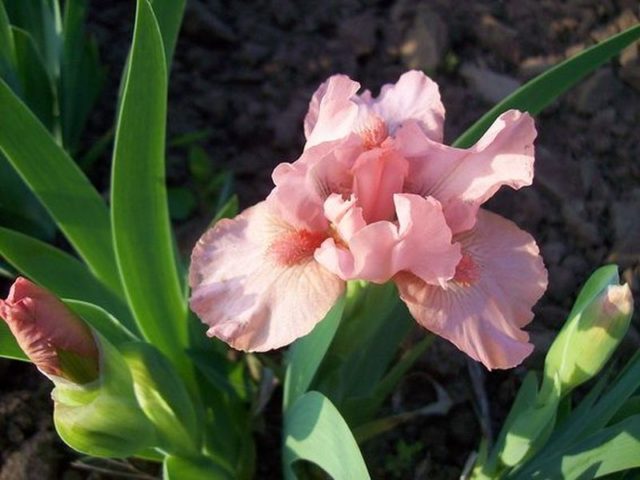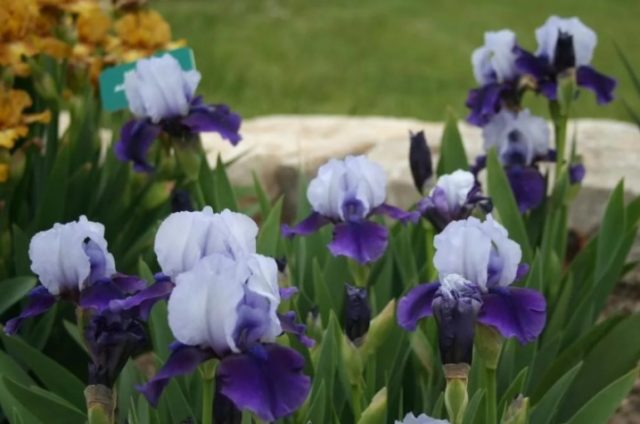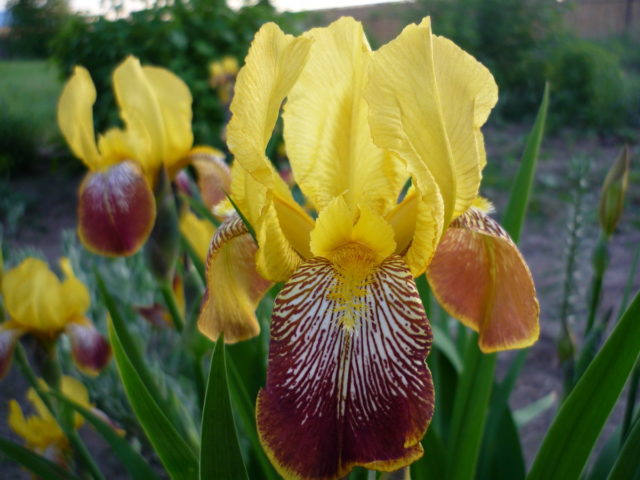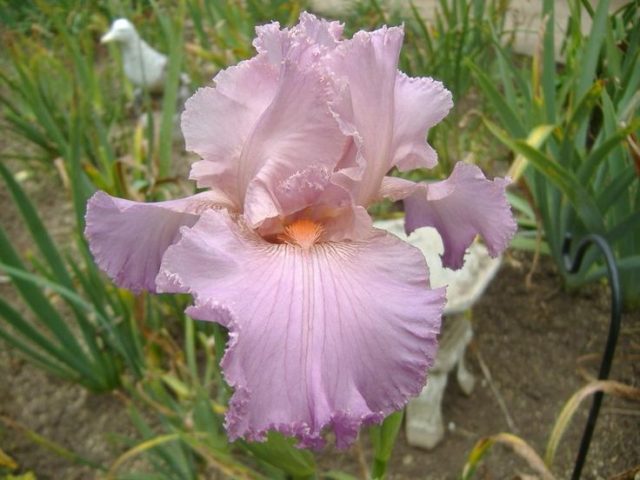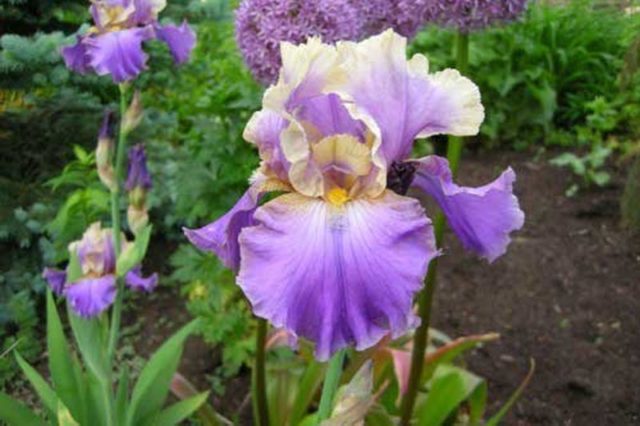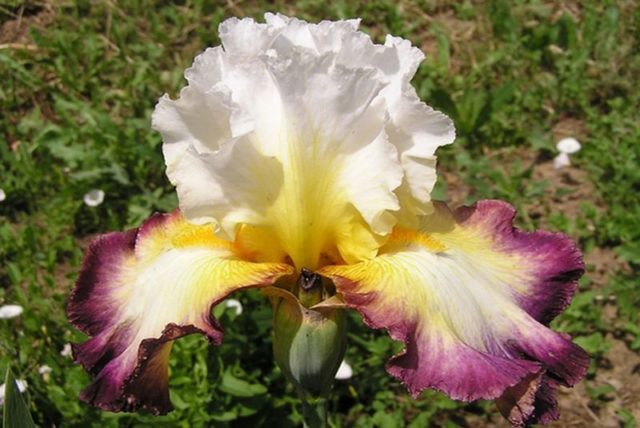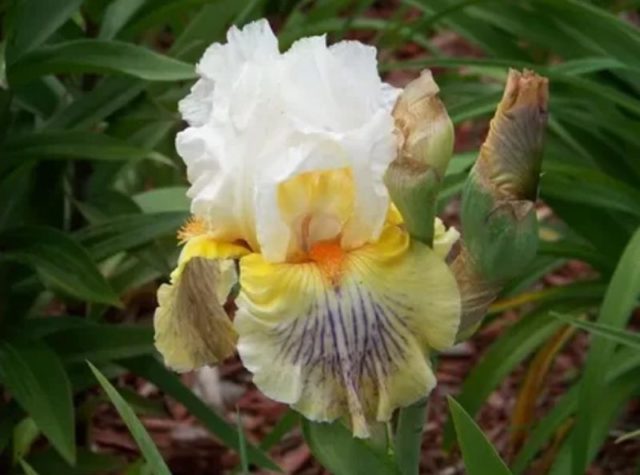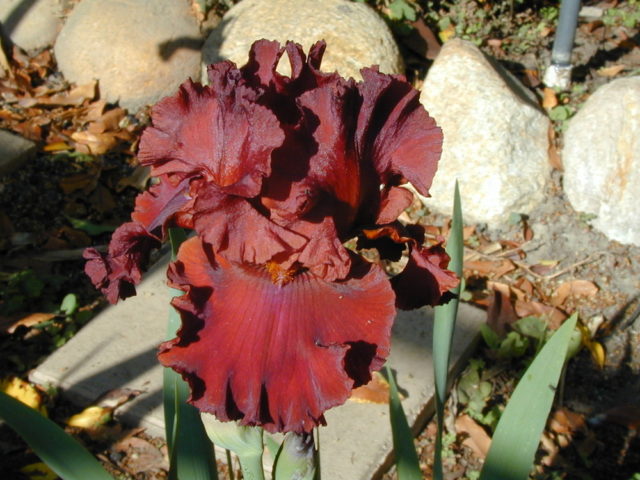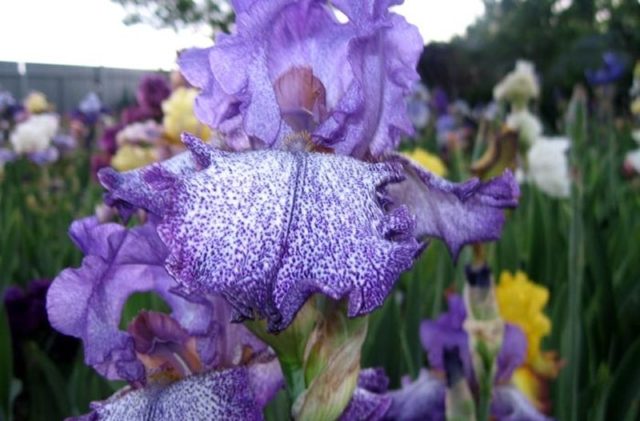Content
Photos of irises of all varieties allow you to appreciate the huge variety of perennials. Among the types of culture, there are tall and miniature, monochromatic and two-colored, light and bright plants.
What are irises
Photos of iris flower varieties show countless perennials. First of all, they can be divided into 2 large groups - bearded, with a pubescent stripe-petal, and beardless. In addition, flowers are usually classified:
- by shades;
- by country of origin;
- by height.
Irises can be attributed to different groups also by the type of underground part - some have a rhizome, others grow from a bulb.
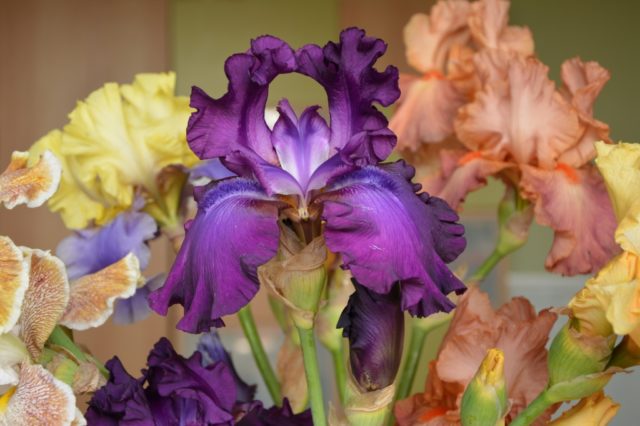
Blooming irises are presented in all existing shades.
Bearded
Among the types of irises with photos and names, bearded plants are of particular interest, they are the most beautiful. In height, they stretch by an average of 25-70 cm, they bring large buds with a characteristic beard, pubescent with a strip on the outer petals. The leaves of the bearded iris are lanceolate, long, flowers often have decorative frills, curling or contrasting edging. One inflorescence can contain up to 12 buds.
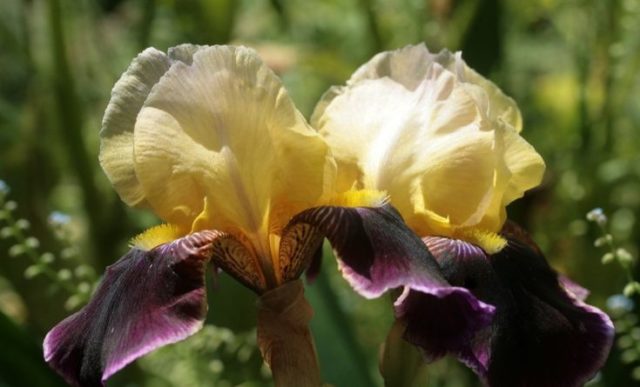
Bearded irises are so named because of the extra fluffy petals-stripes
Classification of bearded irises by color
Bearded irises are usually divided according to their color. The variety is presented in all shades, the palette of decorative perennials is almost unlimited.
Blue and blue
The dark blue and light blue varieties are some of the most popular in garden plots. Such flowers in shade can be very delicate, pastel, or deeply dark. For irises, unlike many other plants, blue is not unusual.
Popular varieties include:
- blue iris Lake Placid;
Lake Placid is one of the most delicate blue varieties with a yellowish beard
- blue iris Dusky Challenger.
Dusky Challenger has both petals and beard that match in color.
Blue perennials go well with white and yellow varieties in flower beds.
Lilac and purple
Lilac and purple irises look spectacular and unusual on flower beds. Most often they are planted next to pale pink or white perennials to create contrast. The known varieties of the group include:
- purple iris Lady Vanessa;
White strokes in the lower part give a special decorative effect to Lady Vanessa's iris
- lilac iris Super Model.
Super Model variety decorated with elegant fringes around the edges of the petals
White
Snow-white varieties of irises are considered quite rare. At the same time, they look very beautiful in flower beds, they can be planted together with light and dark perennials.Decorative white varieties look good surrounded by bright greenery in landscape compositions and can decorate the banks of reservoirs:
- Bianca (Bianca);
Bianca looks very impressive in the sun
- Lady Snowflake.
Iris Lady Snowflake features particularly airy fringed buds
Irises may not be completely snow-white; small blotches of a different color are quite possible near the core.
Yellow
Yellow iris species are in great demand among gardeners. They look especially attractive against the backdrop of green spaces and sunny, bright flower beds. Among the varieties are:
- Muffin (Golden Muffin);
Iris Lady Snowflake features particularly airy fringed buds
- Martile Rowland.
The downy tangerine beard on the Martil Rowland iris is a highlight
Yellow varieties are combined with white and blue perennials. They are often used in cut to create spring bouquets.
Orange and brown
Perennials of warm orange and brown shades look favorably against the background of cold-toned plants. Among the popular varieties of irises with a photo, you can list:
- orange Depth of Field;
The unusual orange iris Dep of Field brings warm colors to the garden
- brown Silkirim.
Silkyrim can be successfully combined with white and blue plants.
It is recommended to plant such irises in well-lit places. In the shade, perennials lose their color saturation.
Pink and red
Red irises become a bright decoration of the garden; they can be the center of a white or yellow composition. Pink plants are less vibrant, but look attractive when combined with white and blue buds of other varieties.
Famous representatives include:
- red iris New Centurion;
New Centurion looks spectacular against the backdrop of greenery
- pink iris Windsor Rose (Windsor Rose).
Windsor Rose is best planted in sunny flower beds
Black
Among the photos of species and varieties of irises, there are black plants. On summer cottages, they are not so common, but are appreciated by lovers of unusual compositions. With the help of dark perennials, it is convenient to highlight the desired area in the garden or to arrange well-visible borders. Among the varieties are:
- Bifo the Storm (Before the Storm);
Black Bifo ze Storm is a very unusual but beautiful iris variety
- Night Game.
Iris Knight Game is similar in shade to the night sky
The shade of many irises in this group is rather dark purple or rich wine. However, for convenience, they are called black.
Swamp
Marsh iris is a wild-growing form that can be found on the banks and in the floodplains of rivers. The color of the buds in nature is usually yellow, but decorative varieties give more variety.
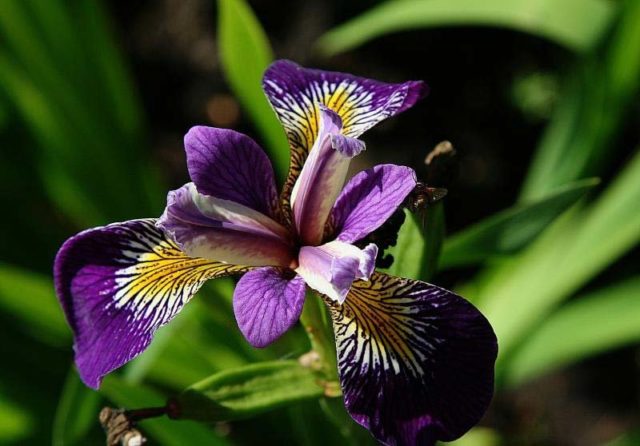
Holden Child - decorative variety of marsh iris with a multicolor color
Dutch
Dutch irises are bulbous plants. They give tall, strong shoots up to 60 cm with single buds of yellow, blue, white or purple flowers.
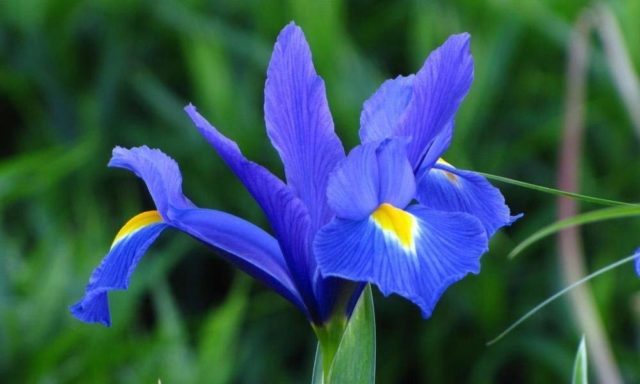
Blue Magic - one of the most beautiful and popular varieties of Dutch iris
Dutch varieties are highly decorative and easy to grow.
Japanese
A characteristic feature of Japanese irises is the almost horizontal arrangement of the petals. Thanks to this, the buds can be up to 25 cm in diameter.

Japanese iris Kogesho has an almost anemone flower shape
Japanese varieties grow well in high humidity.
Bulbous
Basically, irises of this type are represented by Dutch varieties. A distinctive feature is the underground part in the form of an onion. Perennials get their nutrients from it, and not directly from the soil.
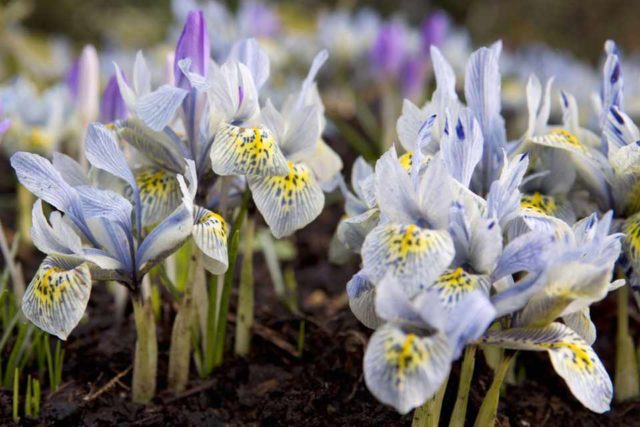
Bulbous iris Katharine Hodgkin suitable for open ground and pots
Bulbous irises are also used for growing in a flowerpot.
Siberian
Irises grow mainly in sunny meadows in the wild, often found in Siberia. They bloom profusely and give up to 40 small buds on a peduncle. They grow up to 70 cm, have long, slightly bluish leaves, retain their decorative effect for a long time - up to a month.
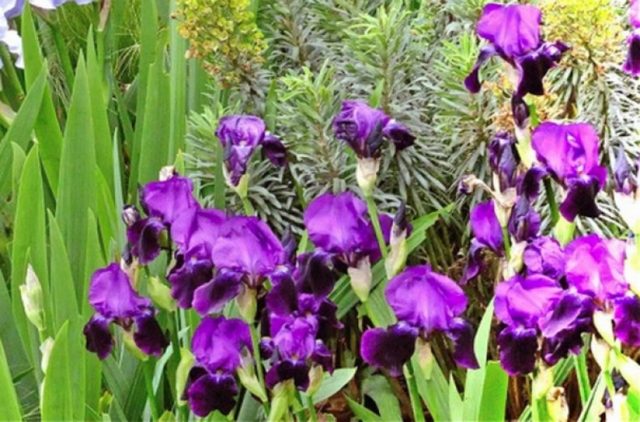
Big Ben (Big Ben) is a beautiful cultivar of Siberian iris
Large varieties of irises
Perennials are considered large, rising 70-120 cm above the soil. Most often they are used in lush flower beds or form a high hedge inside the garden due to them:
- Thornbird. Tall variety about 80 cm with beautiful creamy buds. Blooms profusely in June and July.
Cold-resistant Thornbird works well in the middle lane
- Vibrant. The lush yellow iris rises up to 85 cm and produces buds with an intense golden hue.
Iris Weybrant blooms in June
- Supreme Sultan. Two-color iris 90 cm with good winter hardiness. The upper petals of the buds are yellow-orange, and the lower ones are maroon.
Iris Supreme Sultan enters the flowering period from June to July
Large varieties can be planted along fences and walls of buildings, they decorate empty space.
Low-growing varieties of irises
Perennials are considered dwarf, which do not rise more than 40 cm in height. One bush usually gives only 2-3 peduncles. Low-growing varieties are densely planted along the paths, used as a foreground in flower beds:
- Black Cherry Delight. From June to July, it produces bicolored buds - creamy at the top and with wide purple stripes on the lower petals.
Black Cherry Delight - low grade up to 30 cm
- Doll Dear. It produces yellow-green buds up to 10 cm in diameter with light blue beards. It dissolves in May and June.
The dwarf variety Doll Die rises 25 cm above the ground
- Pink Custion. Miniature variety no higher than 20 cm, pink buds with an orange beard. Early bloom - in May.
The decorative period of Pink Castion lasts 2 weeks
Iris curb varieties
Among the varieties of irises with photographs, attention should be paid to border plants, they bloom at the end of May and in June, are often used to create a kind of live border in flower beds. The height is usually about 60 cm, the buds can be up to 15 cm in diameter:
- Blushes. A beautiful variety with pale blue and dark blue petals, it rises 65 cm above the ground.
Blaches grows equally well in the sun and in the shade
- Realgar. Perennial about 60 cm tall with bright yellow upper and burgundy lower petals.
Realgar begins blooming in June
- Cee Jay. A variety with a blue-violet wide border around the edges of the white petals in the center. Decorativeness falls on the beginning of June, the height of the plant is 60 cm.
Iris C.J. brings buds up to 12 cm
Border varieties are distinguished by good cold resistance and strong immunity.
Repeated flowering varieties of irises
Some types of iris flowers can bloom twice a season - in early summer and again in August or September. This usually happens when grown in the southern regions, where hot weather is still preserved at the beginning of autumn:
- Immortality. The perennial produces white buds with a yellow beard for the first time in May, and the second time at the end of August. It rises up to 80 cm above the ground.
White iris flowers Immortality smell very nice
- Jennifer Rebecca. Pink iris with an orange beard grows up to 80 cm, blooms in late May and re-ejects buds in August-September.
Jennifer Rebecca is often used for cutting
- Mother Earth. Lilac-pink flowers interspersed with yellow in the center appear in June and reappear closer to autumn. The tall variety reaches 90 cm in height.
Iris Mother Earth gives up to 9 buds on a peduncle
Advice! Even in warm areas, it is advisable to feed the remontant irises well, otherwise the second flowering can not be expected.
Hybrid varieties of irises
Most varieties of iris are precisely hybrids obtained from crossing the Germanic species with others. They are characterized by unusual, often iridescent colors and long, abundant flowering:
- Starship Enterprise. A tall perennial of about 90 cm produces buds of a very original color. It is white at the top, yellow at the bottom, and purple at the edges of the outer petals.
Iris Starship Enterprise blooms in June and July
- Expose. An exotic hybrid with a multicolor color - the upper petals of the iris are white, the lower ones are yellow-orange with a wide fan of blue veins. It grows up to 85 cm.
Expose iris blooms in June
- Regimen. Tall hybrid with large red flowers with a pearlescent tint. The petals are corrugated, fringed, the height of the plant is up to 80 cm.
Bright Regimen iris can be planted in the sun, it is not prone to fading
In total, there are over 30 thousand hybrid varieties, many of which have won international awards.
The best varieties of garden irises
It is quite difficult to objectively determine the best varietal irises, it all depends on the preferences of gardeners. But usually in such a group it is customary to allocate the most beautiful, unpretentious and popular perennials, whose advantages are confirmed by high demand:
- Prince of the Medici (Medice Prince). Light ruby iris with crimson lower petals blooms in the middle of summer and brings up to 14 buds on one peduncle.
Iris Prince Medici grows up to 1 m above the soil
- Cloud Ballet. Very beautiful sky blue iris up to 90 cm tall. Blossoms in May-June, retains decorative effect for about 3 weeks.
The Cloud Ballet variety has large flowers - up to 15 cm
- Celestial Explosion. A tall perennial in early summer brings stylish purple buds with a white and yellow beard. Dark lilac dots are scattered on the lower petals.
Celestial Explosion grows up to 90 cm
The most luxurious and beautiful varieties of iris
Several varieties deserve detailed consideration - they are rightfully considered the most luxurious. They are characterized by large buds with very rich or delicate shades.
Amethyst Flame
Iris Amethyst Flame is a tall variety of about 97 cm and blooms in June or July. Brings very beautiful lavender buds, slightly purple hue. The ruffled lower petals are slightly lightened in the center and decorated with silvery barbs and bronze spots at the base.
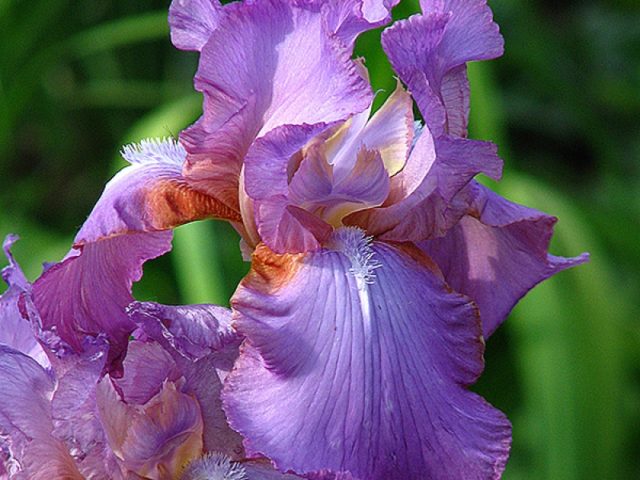
Variety Amethyst flame tolerates cold well and is suitable for the middle lane
Honorabile
Honorabile, or Honorabile, produces buds with a delicate lavender top and black-purple lower petals. The iris beards are tangerine-red, with white rays around, the flowers have a beautiful corrugated structure. The variety blooms in June-July.
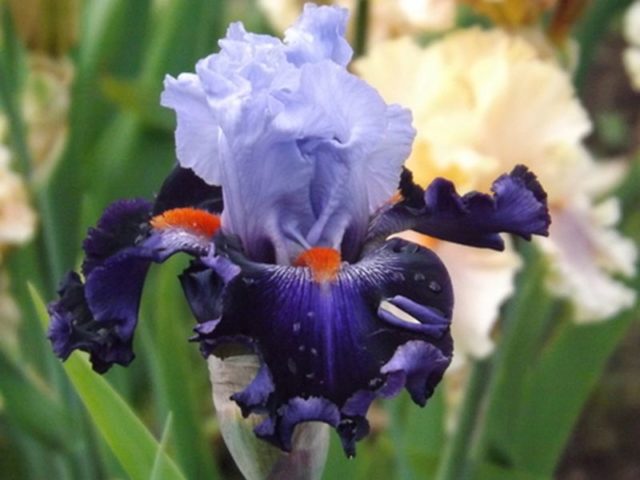
The Honorabile variety reaches 90 cm in height
Arabian Story
Arabian Storey is a two-colored tall iris that rises up to 90 cm. Below its buds are brown-burgundy, with mustard beards, and the upper part is yellow. The highly corrugated flowers give off a sweet scent.
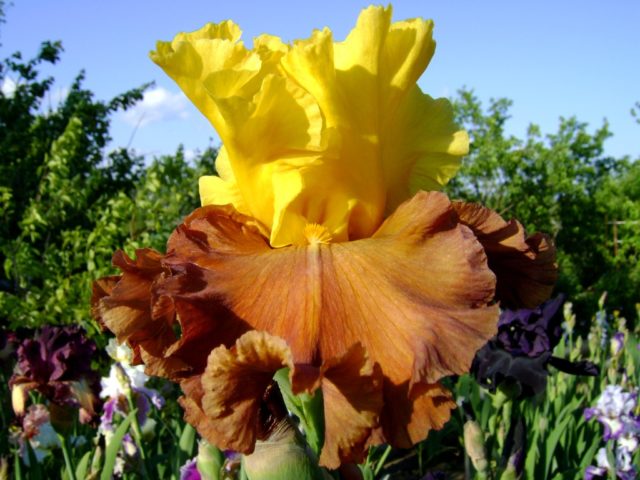
Arabian Storey enters maximum decorativeness in June
Sable night
Sable Night cultivar - tall iris up to 1 m with large flowers about 19 cm each. The color of the buds is double, at the top they are purple, and at the bottom they are ink, with a bronze beard and small light strokes around it. It becomes most decorative in June, emits the smell of sweet cocoa.
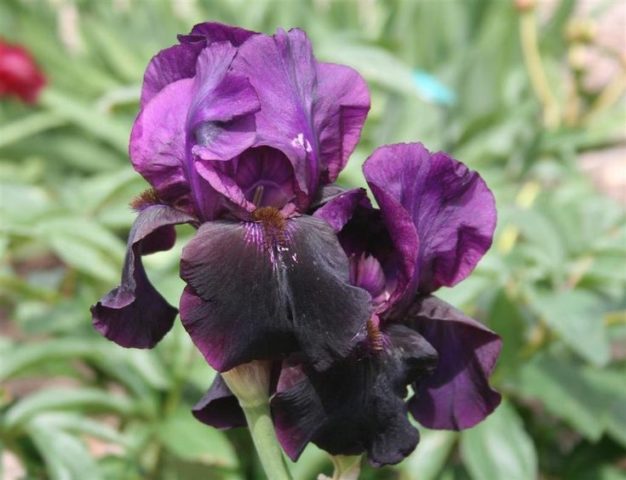
Sable night tolerates spring frosts down to -7 ° С
Stepping out
The Stepping Out variety, or Outgoing, is capable of growing up to 120 cm. The flowers of the iris are contrasting, blue-violet at the top and white with a dark lilac border at the bottom. Blossom in June and July.
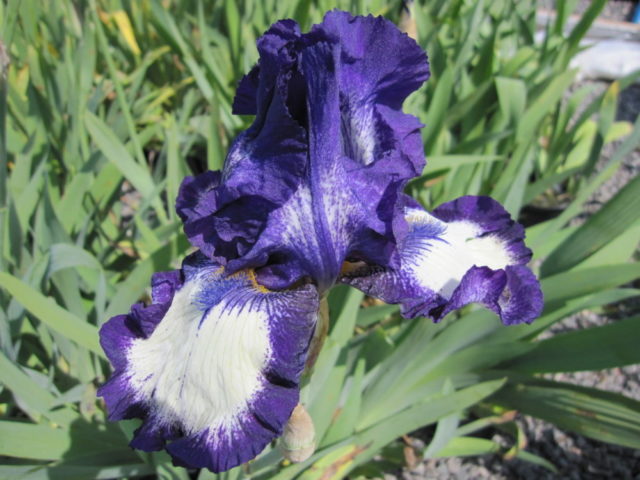
Stepping Out prefers sunny growth spots
Excellency
Excellence is an impressive tall iris of about 70 cm with a two-tone color.The upper petals of the variety are icy lilac, light, and the lower ones are inky lilac with a blue-violet border. The beards are reddish orange. Flowering occurs in early summer.
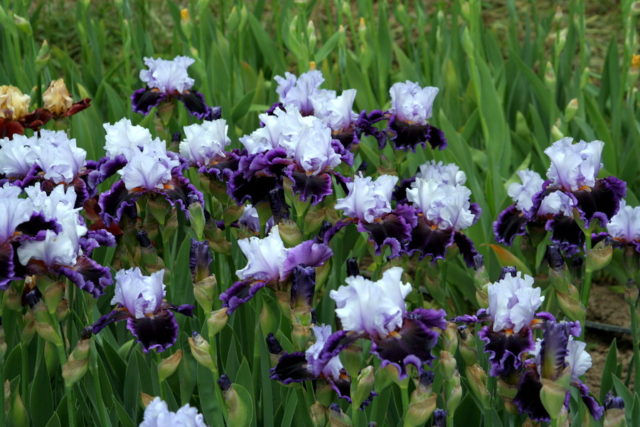
Excellence looks bright in well-lit flower beds
Flavescens
Iris Flavescens is a variety with pale lemon crinkled petals and bright yellow beards. The variety is one of the oldest, it was bred back in 1813. During flowering in early summer, it emits a pleasant refreshing scent.
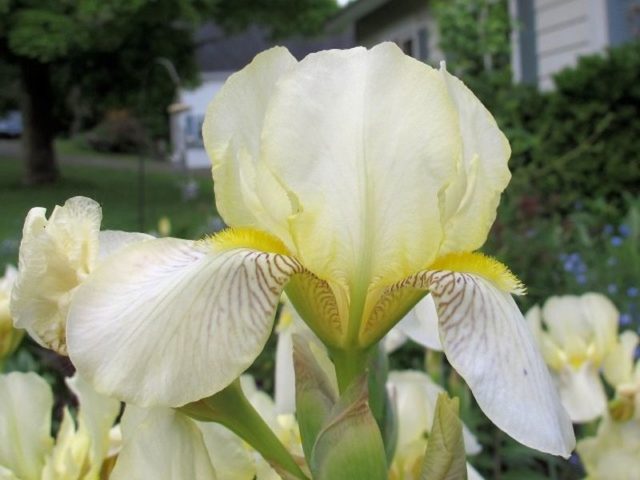
Iris Flavescens looks beautiful in sunny places
Morning Mood
The tall variety Morning Mod, or Morning Mood, rises to almost 1 m and produces large buds on long stems. The petals of the iris are wavy, beige-peach on top with lavender veins, and cream at the bottom, with a purple-red border and a golden beard. Flowering occurs in May and June and lasts about 4 weeks.
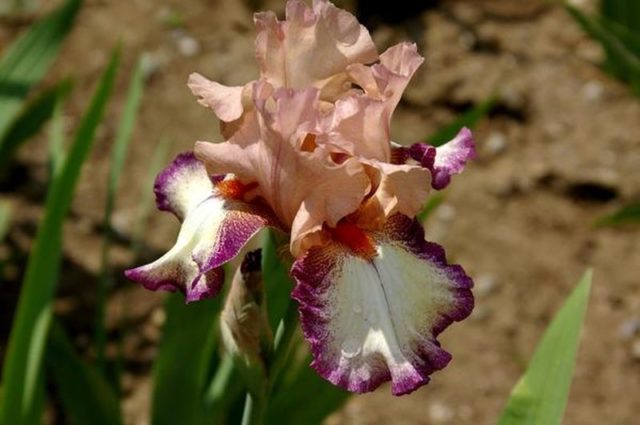
Iris Morning Mood blooms from the end of May
M-me Chereau
Another variety with a rich history is Madame Chero. It was bred in 1844, but after a century and a half it still attracts interest. Small white iris buds have a clear blue border on the upper and lower petals, flowering begins in late June.
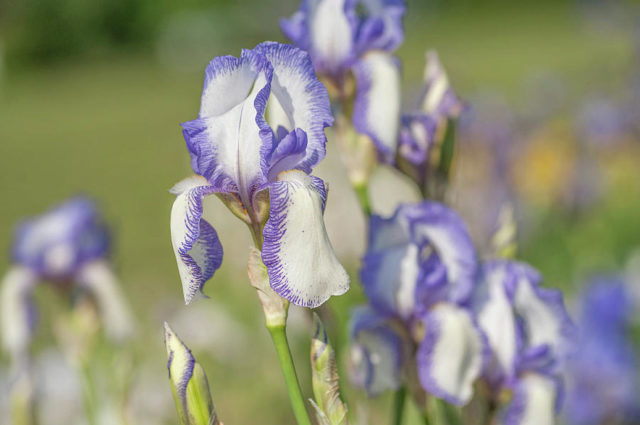
Madame Chereau's blue edging on the petals is streaky and looks very artistic.
Conclusion
A photo of irises of all varieties helps to choose the most beautiful and interesting perennial for a summer cottage. The species diversity is represented by the most unusual shades; the plant will take pride of place on any flowerbed.
